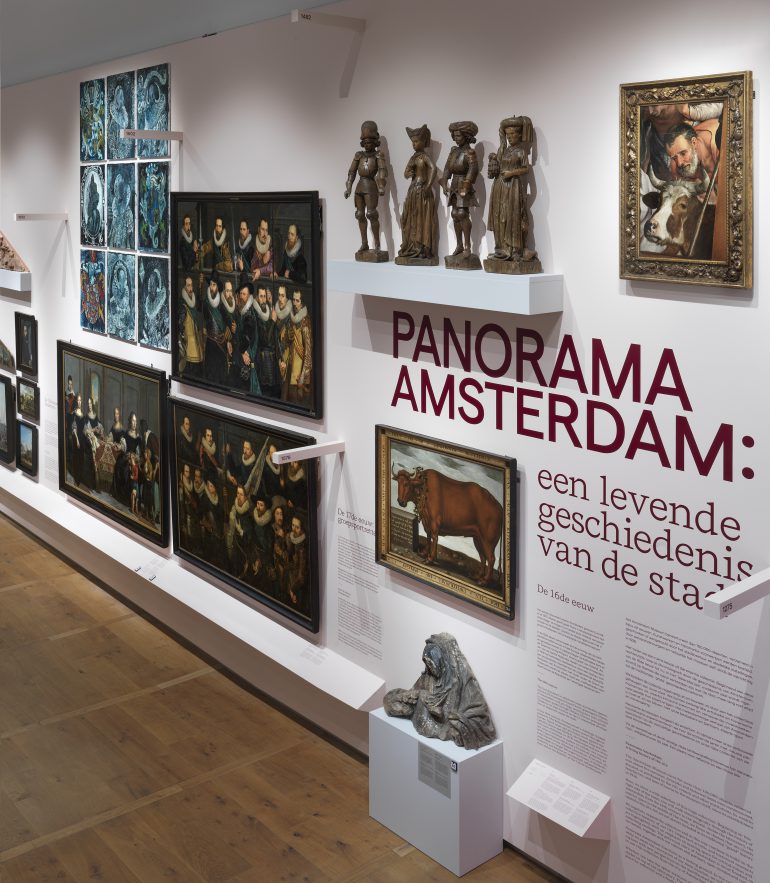The Amsterdam Museum has a new permanent collection presentation, Panorama Amsterdam: a living history of the city. This can be found in the Amsterdam Museum wing of the Hermitage, as the the former City Orphanage at 92 Kalverstraat is closed for major refurbishment work. In Panorama Amsterdam you can see the city of Amsterdam in all its facets. What are the foremost characteristics that define Amsterdam? And has it always been that way? How will the city continue to develop? By connecting stories from the past, present, and future, a broader perspective of the city emerges: Amsterdam, in all its dimensions. See classic icons from the collection as well as new or rarely shown work.
In the first part of the exhibition, the outer wall displays a chronological selection of stories about the city. You really walk through Amsterdam’s past and get a sense of how the city and its residents developed. This includes major, influential events, reflecting on how the city was seen at that particular time and how this is manifested in the museum’s collection.
The exhibition starts in the 16th century, here you can find the oldest map of Amsterdam, Amsterdam in vogelvlucht (Bird’s Eye View of Amsterdam), from 1538 (!) (Cornelis Anthonisz ca. 1505-1553). You will also come across the barrel organ ‘Het Snotneusje’, which saved human lives on May 7th 1945. In addition to the classic masterpieces, recent contemporary works such as M54 by Brian Elstak (1980) and Monuments of Regents by Johannes Vermeer Prize winner Natasja Kensmil (1973) are also on display. The collection presentation includes several objects that have been in the Amsterdam Museum collection for a long time, but have not often left the storage facility.
The second part of the exhibition is the area in the center of the hall, which serves as a laboratory, zooms in on themes which are intrinsically linked to the city, but which in the past were left out of the main narrative about Amsterdam – either deliberately covered up or overlooked. ‘Inside’ and ‘outside’ relate to each other, creating striking and surprising intersections. Themes that are highlighted include science, trade, women’s liberation, the second world war, protests, Ajax, migration and sexual freedom.
Do you want to learn more about Amsterdam? Go to The Amsterdam Museum at Amstel 51 and visit Panorama Amsterdam and the temporary exhibitions.
